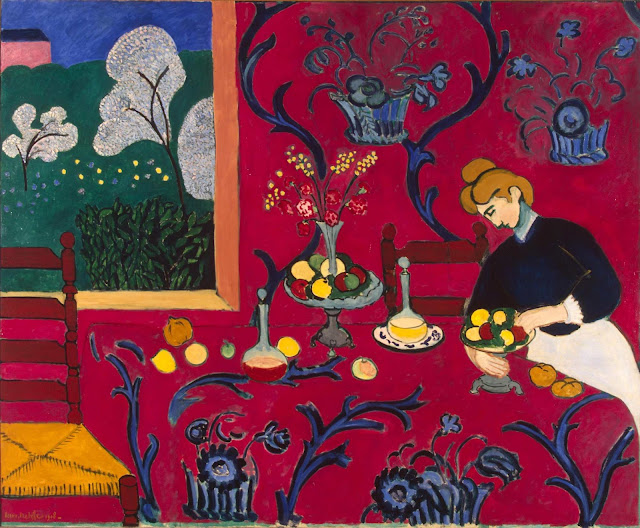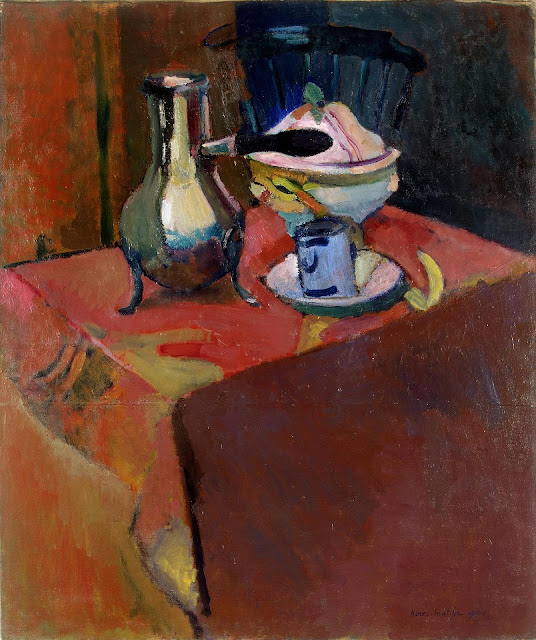 |
| Pink Statuette and Jug on Red Chest, 1910 |
 |
| Vase of Irises, 1912 |
 |
| Still-life with Blue Tablecloth, 1909 |
". . . although a piece of cloth is a real object, it also contains its own pictorial field, which can function as a kind of picture within a picture, and be made to interact with the objects around it in an imaginary as well as a physical way. . . . The decorative motifs on textiles provided Matisse with a dynamic and effective means of suggesting energy and growth, and of making the space of his painting seem to expand beyond its physical bounds."
 |
| Red Room, 1908 |
 |
| Vase, Bottle, Fruit, 1906 |
 |
| Spanish Still-life, 1910-11 |
"Matisse converted textiles to his use in very different ways at different stages, recruiting them initially as subversive agents in the campaign to liberate painting from a tyrannical and decadent classicism that preoccupied his generation in the decade before the First World War. Flowered, dotted, striped or plain, billowing across the canvas or pinned flat to the picture plane, textiles became in his hands an increasingly disruptive force used to destabilize the laws of three-dimensional illusion."
 |
| Still-life with Dance, 1909 |
 |
| Bouquet on Veranda, 1912 |
 |
| The Red Carpet, 1906 |
 |
| Bouquet in Two-handled Vase, 1907 |
 |
| Seville Still-life, 1910-11 |
 |
| The Conversation, 1908-12 |
 |
| Crockery on a Table, 1900 |
 |
| The Painter's Family, 1911 |
"He clashed his colors together like cymbals," wrote John Berger, when Matisse died in 1954, "and the effect was like a lullaby."
– quoted passages are from Matisse, His Art and His Textiles : The Fabric of Dreams (London : Royal Academy of Arts, 2004). All paintings are from the collection of the State Hermitage Museum in Saint Petersburg.